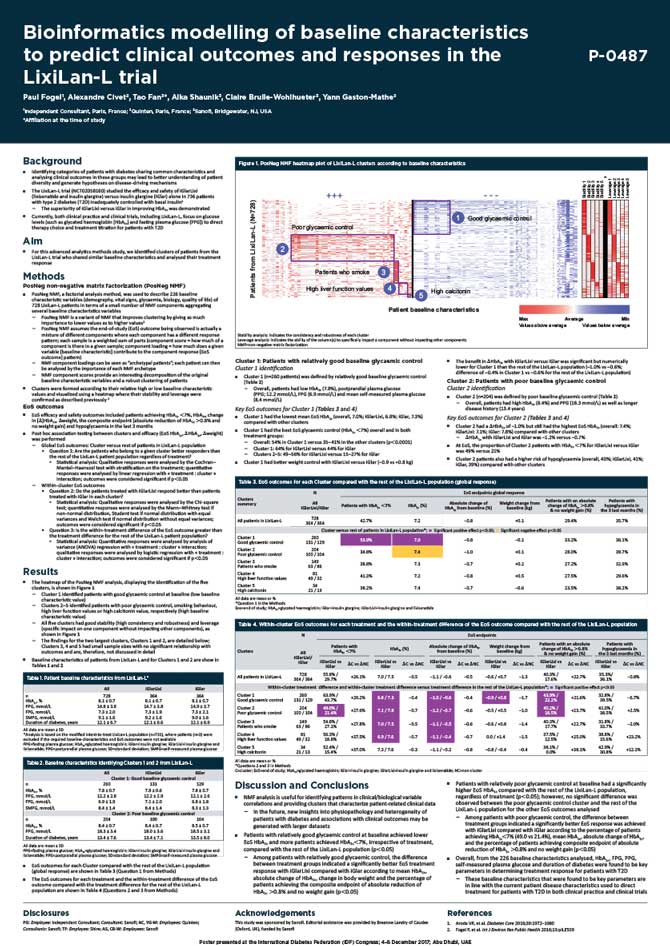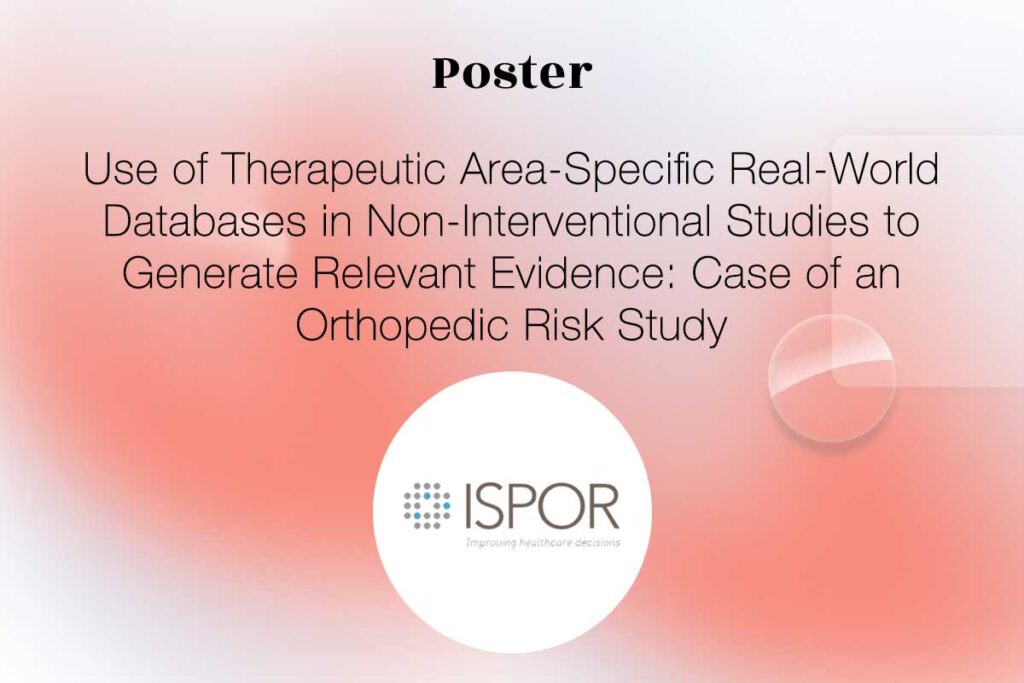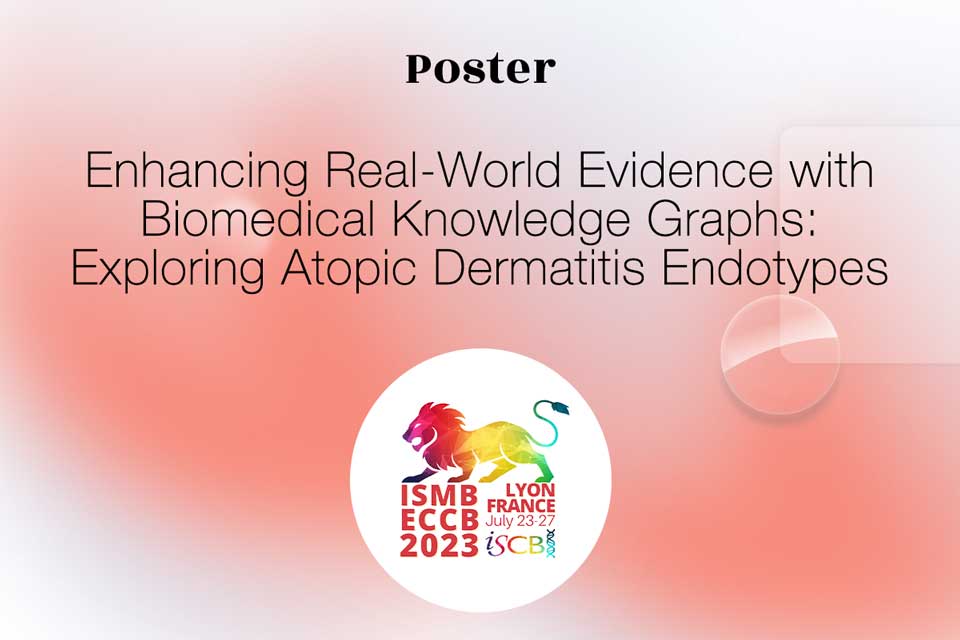Abstract
Background
- Identifying categories of patients with diabetes sharing common characteristics and analysing clinical outcomes in these groups may lead to better understanding of patient diversity and generate hypotheses on disease-driving mechanisms
- The LixiLan-L trial (NCT02058160) studied the efficacy and safety of iGlarLixi
(lixisenatide and insulin glargine) versus insulin glargine (iGlar) alone in 736 patients with type 2 diabetes (T2D) inadequately controlled with basal insulin1- The superiority of iGlarLixi versus iGlar in improving HbA1c was demonstrated
- Currently, both clinical practice and clinical trials, including LixiLan-L, focus on glucose levels (such as glycated haemoglobin [HbA1c] and fasting plasma glucose [FPG]) to direct therapy choice and treatment titration for patients with T2D
Methods
PosNeg NMF, a factorial analysis method, was used to describe 226 baseline characteristic variables (demography, vital signs, glycaemia, biology, quality of life) of 728 LixiLan-L patients in terms of a small number of NMF components aggregating several baseline characteristics variables
- PosNeg NMF is a variant of NMF that improves clustering by giving as much importance to lower values as to higher values2
- PosNeg NMF assumes the end-of-study (EoS) outcome being observed is actually a mixture of different components where each component has a different response pattern; each sample is a weighted sum of parts (component score = how much of a component is there in a given sample; component loading = how much does a given variable [baseline characteristic] contribute to the component response [EoS outcome] pattern)
- NMF component loadings can be seen as “archetypal patients”; each patient can then
be analysed by the importance of each NMF archetype - NMF component scores provide an interesting decomposition of the original baseline characteristic variables and a robust clustering of patients
Clusters were formed according to their relative high or low baseline characteristic values and visualized using a heatmap where their stability and leverage were confirmed as described previously 2
Results
- The heatmap of the PosNeg NMF analysis, displaying the identification of the five clusters, is shown in Figure 1
- Cluster 1 identified patients with good glycaemic control at baseline (low baseline characteristic value)
- Clusters 2–5 identified patients with poor glycaemic control, smoking behaviour, high liver function values or high calcitonin value, respectively (high baseline
characteristic value) - All five clusters had good stability (high consistency and robustness) and leverage (specific impact on one component without impacting other components), as shown in Figure 1
- The findings for the two largest clusters, Clusters 1 and 2, are detailed below;
- Clusters 3, 4 and 5 had small sample sizes with no significant relationship with outcomes and are, therefore, not discussed in detail









